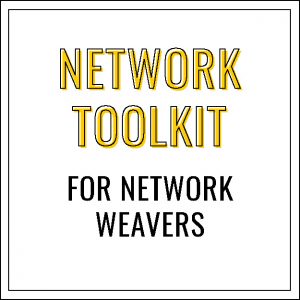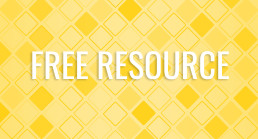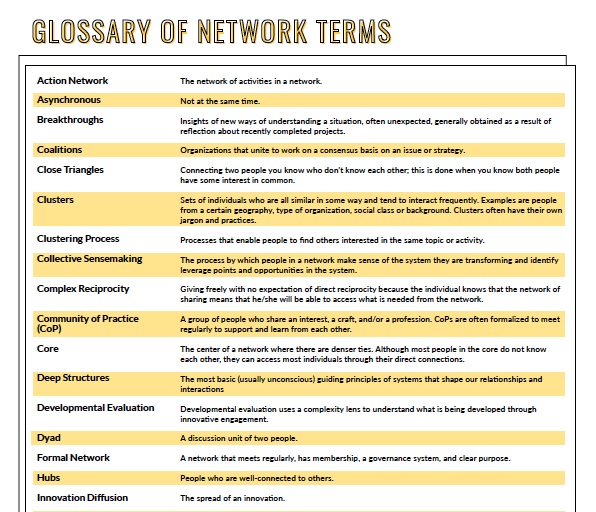DEEPER THAN HAIR DISCRIMINATION: A MOVEMENT TO ADDRESS AND DISMANTLE SYSTEMIC RACISM
When I graduated from Columbia University, I was informed in a professional development workshop at a national conference that my hair should not distract from my excellent credentials. I did not understand how hair that grew naturally out of my scalp could be labelled as a source of barriers. The styles that were mentioned as socially acceptable for professional upward mobility were straight hairstyles that did not reflect the texture of my natural hair.
As co-founder of the CROWN Campaign, a movement founded to end discrimination and injustice of all forms including hair discrimination. I have had lived experiences of hair discrimination which fueled my passion to address systems transformation through a lens that is informed by my interdisciplinary background. CROWN campaign is an interdisciplinary team and growing village of grassroots advocates in academia, business, policy, journalism, research, health, law, the arts, and community who have lived experiences of hair discrimination, know of those impacted by hair discrimination, and have been engaging voices from around the country and globe on experiences with hair discrimination. The CROWN campaign is a labor of love.
1. A few things to know about the CROWN Campaign
The CROWN Campaign was founded to end discrimination and injustice including hair discrimination locally and globally and we do this using a “it takes a village approach”. The CROWN campaign village has shared expertise in research, law, creative arts, journalism, business, virtual and in-person activism and many other areas.
2. My Hair, My Crown, My Freedom
I have recently written and directed a short animation film, entitled “My Hair, My Crown, My Freedom” and brief discussion guide to engage local and global populations on what a diverse, equitable and inclusive world can look like.
The short animation film can be found HERE
3. Journey of the CROWN Campaign
The journey for the CROWN campaign began in February 2019, when the New York City mandate against hair discrimination was announced. I was sitting on the couch as I read the news about the hair ban. Reading the New York City hair ban validated and emboldened my voice and experiences in terms of the discrimination that I faced and I reached out to individuals in my network through a mass chain of emails about tackling this issue from an interdisciplinary lens including reaching out to Shemekka Ebony who would become a co-founder in this movement. It started with many emails. In the initial stages, there were some who said “it is just hair” and the black community has more pressing issues to address in terms of systemic racism.
Those of us who have had lived experiences knew that it is deeper than just hair in terms of impacting educational attainment, employment opportunities, upward mobility, health and well-being. This further emoboldened me to share my experiences and reach out in my networks to get an interdisciplinary team together to provide evidence on the harmful impacts of hair discrimination from a big picture lens as being much deeper than hair.
The individuals I initially engaged then referred other individuals who came to form the core crown campaign team and subsequently the growing village who have contributed their expertise. For example, Shemekka Ebony, co-founder, has been instrumental in developing the network of activist through social media advocacy. Dr. Manka Nkimbeng joined the team bringing in the research lens of the health impacts of discrimination from her dissertation research. Both Shemekka Ebony and I mentored Dr. Manka Nkimbeng as part of the Robert Wood Johnson Health Policy Research Program where she expressed an interest in crown campaign’s efforts and wanted to focus her enhanced learning project on the health impacts of hair discrimination. Crystal M Richardson and JB Afoh Manin have focused on the legal and policy angles with JB’s focus being on men and hair discrimination.
4. It’s Deeper than Hair – Black Hair History and perpetuation of systemic racism today
The CROWN Campaign will be launching a global series called deeper than hair to further contextualize the health, economic, social justice, and well being impacts of discrimination. In the black community, hair and hairstyles have strong historical, political, cultural, social, and familial significance in terms of identity. Such hairstyles include afros, braids, bantu knots, locs, African thread styles, twists, fades, and leaving hair in various forms of its natural state.
Unfortunately, individuals have been discriminated against on the basis of the expression of this cultural identity and practice of natural hair/hairstyles. This has resulted in a number of inequities in activities of daily living such as lack of employment opportunities, discrimination in the workplace, discrimination in school settings, job loss, microaggressions and much more. In a number of case studies, individuals have been told to conform to the dominant culture for assimilation and upward mobility further promoting racist stereotypes. There is strong research evidence on the adverse effects of different forms of discrimination on health, social determinants of health, and equity.
Understanding the historical context of black hair helps us to understand how systemic racism has been propagated in policies. Dr. Patricia O’Brien Richardson, one of the CROWN Campaign collaborators in academia provides an in-depth historical context based on her research as follows: “Black people have a rich history with hair beginning in Africa. In the earliest African civilizations, hair was considered a cultural marker and used to indicate age, marital status, wealth, rank, and tribal affiliation. In American society, hair has historically been used as a tool of systemic violence against black men and women who have been socially penalized and stigmatized for their hair. During colonial period and later in the Jim Crow era came to be described as wild, unkempt, messy, sweaty, knotty, dirty, and nappy. Wild, messy hair was often equated with wild behavior, signifying insanity.”
We see similar words, “unkempt” “wild” “messy” “nappy” “unprofessional” perpetuating structuralized and systemic racism in workplace and school grooming policies today.
5. Impact of the CROWN Campaign
Since the vision and inception of CROWN Campaign in February 2019, CROWN Campaign has provided advocacy and presentations around the country, and has a growing list of partners in advocacy, including partnering with Dr. Patricia O’Brien Richardson who envisioned the first ever historic inaugural CROWN Conference in New Jersey. An attendee at this conference, Karla Arroyo, a journalism student, has become our first inaugural CROWN Campaign fellow. She will be completing her capstone as part of the fellowship with a focus on community organizing and uplifting the stories and voices of those impacted. I, along with the CROWN campaign team and crown campaign village, will be mentoring her from an interdisciplinary framework of co-design.
Due to a request from policy makers for research on hair discrimination, CROWN campaign has created a readily accessible starter library in the resource section for evidenced based research on the impacts of hair discrimination because we recognize that it is deeper than hair. We all have lived experiences and have interacted with individuals and communities who have been severely impacted from hair discrimination in terms physically, socially, mentally.
The CROWN campaign team and village contributes expertise in the creative arts including photography, film, scholarly research, journalism, written and spoken word, in person advocacy and educational outreach, as well as social media advocacy. CROWN campaign has developed tools and resources and also curated tools and resources from the growing village that can be found here. In the village, we want everyone to feel empowered to lift their voice and expertise in various forms to dismantle racism. We have seen this manifest beautifully in the village through research, advocacy, poetry, film photography, legal, policy and many other areas. The tools and resources can be found HERE.
6. CROWN Campaign Advocacy Case
CROWN Campaign has been in advocacy for cases of discrimination including most recently two young boys who were deprived of an education within the Tatum Independent School District for natural hair. CROWN Campaign provided expert witness testimony and an advocacy letter.
It truly takes a village to dismantle racism and CROWN campaign with the help of the growing village is taking an interdisciplinary approach to tackle and dismantle racism using a multi-prong approach.
The CROWN Campaign is a team of volunteer advocates that are self-funding this important work across the United States and beyond. We cannot do it alone. We need your help!We are a growing Interdisciplinary collective of community members, professionals, and experts with lived experience that are championing the advocacy and education of the impacts of hair discrimination to natural hair citizens. We need support funding the travels, events, expenses, and labors of love from our team. Donations from those that believe in this work and can identify with the need for change, please donate and share. http://www.crowncampaign.com/donate.html
Learn more about the CROWN Campaign at www.crowncampaign.com
FB IG & Twitter @crowncampaign
Dr. Bernice B. Rumala is Co-Founder for the CROWN Campaign , an effort aimed at ending discrimination and injustice locally and globally, including hair discrimination. With more than 15 years of experience, Dr. Rumala earned a PhD and three masters degrees from Columbia University and served as a Fogarty-Fulbright and Harvard Fellow. She has contributed her interdisciplinary expertise as a change agent in the public, private, academic and international sectors. As a former senior consultant for the United Nations, her areas of interest and expertise include equity, health equity, social justice, diversity, inclusion, discrimination, interdisciplinary-programming, advocacy, community engagement, and systems transformation.
Dr. Rumala has lived experience of the ongoing challenges of severe inequities and the detrimental impacts to individuals and communities, specifically vulnerable communities and communities of color. This is unacceptable to her and should not be the norm. Dr. Rumala also considers herself a global citizen based on international experiences in more than thirty countries. She has had global experiences in stable regions as well as regions impacted by war, conflict, and instability, including Iraq where she worked for the United Nations. She continues to contribute her expertise as a global and local leader, consultant, and, is the Founding CEO of the Change Agent Firm.
Money Patterns Matter
Join us for an interactive workshop with Michael Linton about circular systems for circular economies. There is more talk of the circular economy than there is action, and will be until circular moneys makes material and service circulation possible and viable. But, too few yet have any idea what circular money actually is, and less still know how easy it can be to implement.
This is an opportunity to begin a process of participative enquiry, to discover how to apply common money to open cooperative ventures so that they can pay their own way.
[ap_spacing spacing_height="15px"]
February 21, 2019 18:00 UTC Event time in YOUR time zone HERE
Hosted by Nenad Maljković and Michael Linton
[ap_spacing spacing_height="20px"]
Start NOW: take time in advance of our workshop to check out notes shared by the presenter
Video conference joining instructions will be shared vie email ONE HOUR BEFORE the event. Contributors to REconomy practitioners Open Collective have FREE access to all our events.
This event is organized within REconomy practitioners local-to-global virtual community of practice. Click here for more information about what we are up to.
[ap_spacing spacing_height="20px"]
Trainings from Visible Network Labs
Many people today are deeply engaged in the “network way of working”, driven by a conviction that working together will make a greater impact than going about any one project alone. Yet, while we are better than ever at getting groups of diverse partners together to work on an issue, there are very few places we can get the Network Leadership skills we need to be successful. This is beginning to change, with a number of organizations filling in the gaps and supporting learning networks, trainings, and peer-learning to build capacity for people to engage in network building. At Visible Network Labs we are committed to providing a diverse set of opportunities for every learner to build their capacity to engage in, coordinate, and lead networks. The VNL Learning Lab is pleased to present a number of Network Leadership Trainings in the coming months.
These include:
- Network Leadership Training Academy
- Network Leadership Webinar Series
- Online Partner Tools Workshops
The focus of the VNL Learning Lab
trainings is on skills to Build, Manage, and Evaluate effective
networks. While these trainings will continue to focus on the most
important aspects of Network Leadership, this Spring is an exciting
time for the advisory group planning the training, as we begin to
think about how innovation and alternative structures can move
networks to the next level.
- Building Networks: While we continue to focus on important topics such as awareness of equity, inclusion, and diversity in network voice, participation, and decision-making, upcoming trainings will be integrating innovative thinking into network building with training and talks on Design Thinking in networks, with a focus on stakeholder involvement in ideating, experimentation, and adaptive processes in network building.
- Managing Networks: Our focus will continue to provide the tools and skills for facilitating, administrating, and governing networks, but our 2019 trainings are going to dig deep into alternatives for governing networks – looking at self-governing structures, empowerment models of leadership and governance, developing the business model for networks, and developing shared governance models. We are also introducing skill building on how to move forward with heart while selling our mission to convince others to invest their time, energy, and funding - and how we can feel good about it.
- Evaluating Networks: The availability of tools, models, and frameworks to tell our network stories and demonstrate their effectiveness is more exciting than ever. We will focus on sharing the opportunities inside our own Aspen platform for this work, while highlighting options that meet the different needs of networks. In 2019, we are focusing on all the myriad ways to tell our network stories with color, data, truth, and impact.
CLICK HERE for a complete list of Visual Network Labs' 2019 offerings.
Three Workshops from New Directions Collaborative
About ten years ago, I was working with a non-profit organization in the field of sustainability and social change, and was invited by a funder to a conversation with about 15 other organizations to explore about how we could align our work and consider working as a network.
From that initial experience of finding how to connect and amplify the work of many organizations, I have had the opportunity with New Directions Collaborative to work as a facilitator of a range of network initiatives across issues such as climate action, local food systems, smart growth, racial equity, and educational attainment.
It has been a fascinating learning process of seeing what is needed to work in these networked ways for the greatest impact. One of my favorite aspects is learning to work with the idea of "emergence," where we create conditions for new relationships, flows of information, deeper understandings, and innovative ideas to arise out of the whole group in ways we couldn't have predicted.
There is an art to this kind of collaborating and I have learned from diverse sources of ideas and methods, e.g., from others in this Network Weaver community and other fields, such as Art of Hosting. Many traditional leadership programs do not train people in how to "work as part of an ecosystem." Last fall, I decided to distill the approaches and tools I was regularly using in my work into a series of training workshops that I offered in person in New Hampshire. The response was so encouraging and I had requests to offer on-line workshops so more people could participate.
Starting in February, I will host three workshops.
- The first focuses on how to design meetings to generate multiple benefits, such as pooling our knowledge for collective sensemaking, strengthening relationships and spurring micro-collaborations.
- The second explores the leadership skills and qualities needed to host collaborative work.
- The third workshop builds skills in how to work as part of a larger system and help that system align and be more effective. All of these will be held on Zoom and be interactive, where you get to experience of participatory meeting methods, and see how they can work on line as well.
CLICK HERE for details of the workshops - hope you might join and help spread the word!
Glossary of Network Terms
All the network jargon got your head spinning? This two page handout has dozens of words commonly used in network circles and their definitions. Download and pass on to everyone in your network(s).
[ap_spacing spacing_height="15px"]
Network Toolkit for Network Weavers
 Want to know how start with network building?
Want to know how start with network building?
This free toolkit offers a set of activities you can incorporate into your next gathering to set you on a path to an effective network.
It includes speed networking, PostIt note mapping, closing triangles and other processes that anyone can easily facilitate.
Network Weaver Free Resources Package
Each week, we add a new free item to our store.

This week we are offering: Network Weaver FREE RESOURCES PACKAGE.
ALL of the free resources currently available at the Network Weaver Resource Page in one complete downloadable file.
Systems Thinking and Networks
Last fall, I heard about an online educational portal called Plus Acumen, which advertises itself as the “world’s school for social change” and offers several free classes. Many of their offerings are geared towards providing practical and accessible tools that people involved in nonprofits, community groups, and networks can use to improve their efforts.
After looking through the course catalogue, I found and enrolled in a class called Systems Practice, led by Rob Ricigliano of The Omidyar Group. The class was insightful, and lead students through an intuitive series of exercises exploring systems through creating a framing question, identifying forces, creating a systems map using Kumu, and crafting a strategy rooted in leverage points.
Throughout the class, I gained a general framework to use to better understand how systems work, and tools that can improve the work I do.
I highly recommend this class to others interested in systems thinking and social change, as it is being offered again for free this fall starting October 9th.
Classes like this are important for advancing the practice of networks by integrating a holistic way of thinking about systems change with tools and strategies that networks can use to be more effective. As more networks blend systems thinking into their core strategies, the possibilities of accelerating transformational change expand, and areas for new tools, practices, and collaborations become clear.
If you’re interested in these items, I’d suggest taking the course, convening a team of people to enroll in the class with you, and share your learnings along the way, as well as ways you are integrating this into your network’s strategy.
[ap_spacing spacing_height="40px"]
Criteria For A Design Process Emerging From Network Values
[ap_spacing spacing_height="35px"]Co-Design Series Part 3[ap_spacing spacing_height="28px"]
First, we wanted to make sure our definition of co-design fit our list of network values.
[ap_spacing spacing_height="15px"]1) The co-design process needs to create an alternative to the inevitable unequal power found in a conventional design process. Participants must be peers with the designers not just subjects of inquiry. Designers must recognize, honor, and center the true expertise needed to design the product - that of the participant/user. Participants should have equal weight in designing and determining the end products that the design process creates. Ask, Does everyone feel like their expertise, experiences, and contexts are valued?
Cea and Rimington describe 5 ways to equalize power in a design process:
- define the problem at hand with the others involved
- trust all players with full information about the big picture of the project and the constraints
- support authentic leadership roles and structures for participants
- create an environment that incentivized decentralization of creative input and power
- encourage fluid roles.
[ap_spacing spacing_height="28px"]2) To underscore trust and promote deep learning, we think the design process should develop long-term relationships between designers and users. This moves everyone involved from transactional relationships to those that can be transformative. For this to happen, we cultivate relationships that support vulnerability and truth-telling. Furthermore, these deeper, more honest and peer like relationships will strengthen the overall network: any codesign process is a network building process. Ask, “Do people feel comfortable sharing their true opinions of the process and product?”
[ap_spacing spacing_height="28px"]3) Next the process must have maximum engagement of the participants who will be impacted by the product or who are interested in the design process to develop the product. This suggests moving beyond focus groups to having more rigorous, regular feedback on prototypes; literacy needs to be developed in everyone to understand contexts, technical terms, and experiences. People need to have opportunities to engage in different venues (one-on-ones, small groups, full group convenings). Ask, "Are people excited to engage?”
[ap_spacing spacing_height="28px"]4) The process must value difference and diversity of perspectives. This means that many different kinds of people - young and old, people from different backgrounds - are included. This is critical because it is diversity that leads us to question our assumptions and think differently about design. We like the term productive conflict. Ask, “How can differences let us see a new way of looking at things?”
[ap_spacing spacing_height="28px"]5) Everyone involved in the process needs to understand that the product development process is iterative. Any design is in perpetual beta. We need to be continually involved in gathering feedback and using it to transform the products that we co-create. Ask, “Is there energy for continued conversations about the product or process?”
[ap_spacing spacing_height="28px"]6) In most cases, the initial design team will involve a limited number of participants of the network - even if it uses participative processes. However, part of the design process needs to be strategizing how each design participant can introduce and share the product with others in their network so that the product goes viral. Ask, “Does everyone in the network have a chance to try out the new product to determine usefulness?"
[ap_spacing spacing_height="28px"]7) The design process is also an opportunity for participants to learn how to conduct co-design processes in their organizations and local networks. Ask, “Does the design process provide time to help participants integrate co-design into all network processes?”[ap_spacing spacing_height="28px"]
Read Part 1 of the Co-Design Series HERE
Read Part 2 of the Co-Design Series HERE
Why Dismantling Racism and White Supremacy Culture Unleashes the Benefits of Networks
Before we go any further down the road of this blog, we need to point out that network approaches cannot become transformative unless the network explicitly works on dismantling white supremacy culture and racism.
This is because networks only flourish when people in them are able to interact as peers, valuing everyone’s input and involvement. In addition, many aspects of dominant or white supremacy culture hold us back from reaping the benefits of networks, but are so pervasive as to be hidden from our awareness. Tema Okun has one of the best lists of these cultural characteristics which include (the next two sections are quoted verbatim from her article):[ap_spacing spacing_height="15px"]
1. Perfectionism
- Little appreciation expressed among people for the work that others are doing; appreciation that is expressed usually directed to those who get most of the credit anyway[ap_spacing spacing_height="15px"]
- more common is to point out either how the person or work is inadequate - or even more common, to talk to others about the inadequacies of a person or their work without ever talking directly to them[ap_spacing spacing_height="15px"]
- mistakes are seen as personal, i.e. they reflect badly on the person making them as opposed to being seen for what they are – mistakes[ap_spacing spacing_height="15px"]
- making a mistake is confused with being a mistake, doing wrong with being wrong[ap_spacing spacing_height="15px"]
- little time, energy, or money put into reflection or identifying lessons learned that can improve practice, in other words little or no learning from mistakes[ap_spacing spacing_height="15px"]
- tendency to identify what’s wrong; little ability to identify, name, and appreciate what’s right[ap_spacing spacing_height="15px"]
- often internally felt, in other words the perfectionist fails to appreciate her own good work, more often pointing out his faults or ‘failures,’ focusing on inadequacies and mistakes rather than learning from them; the person works with a harsh and constant inner critic
[ap_spacing spacing_height="20px"]
2. Sense of Urgency
- continued sense of urgency that makes it difficult to take time to be inclusive, encourage democratic and/or thoughtful decision-making, to think long-term, to consider consequences[ap_spacing spacing_height="15px"]
- frequently results in sacrificing potential allies for quick or highly visible results, for example sacrificing interests of communities of color in order to win victories for white people (seen as default or norm community)[ap_spacing spacing_height="15px"]
- reinforced by funding proposals which promise too much work for too little money and by funders who expect too much for too little[ap_spacing spacing_height="15px"]
Others are: defensiveness, quantity over quality, worship of the written word, only one right way, paternalism, "either/or" thinking, power hoarding, fear of open conflict, individualism, "I’m the only one", objectivity, and right to comfort.
Please read the entire article here.
As Tema points out,
“[Organizations] who unconsciously use these characteristics as their norms and standards make it difficult, if not impossible, to open the door to other cultural norms and standards. As a result, many of our organizations, while saying we want to be multi-cultural, really only allow other people and cultures to come in if they adapt or conform to already existing cultural norms. Being able to identify and name the cultural norms and standards you want is a first step to making room for a truly multi-cultural organization.” [ap_spacing spacing_height="15px"]
Please share experiences you have had or how your organization or network is working to dismantle racism and dominant culture.





